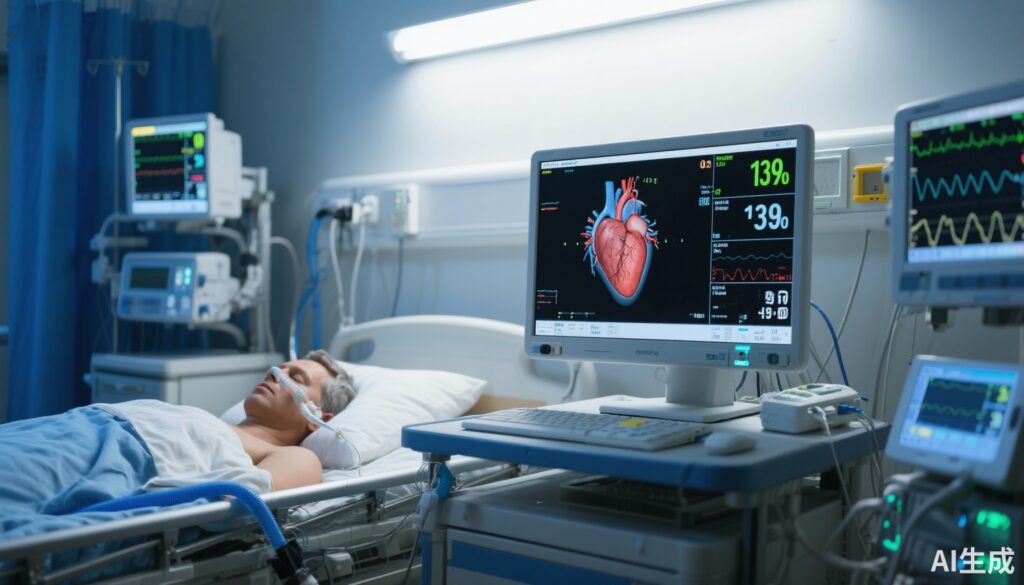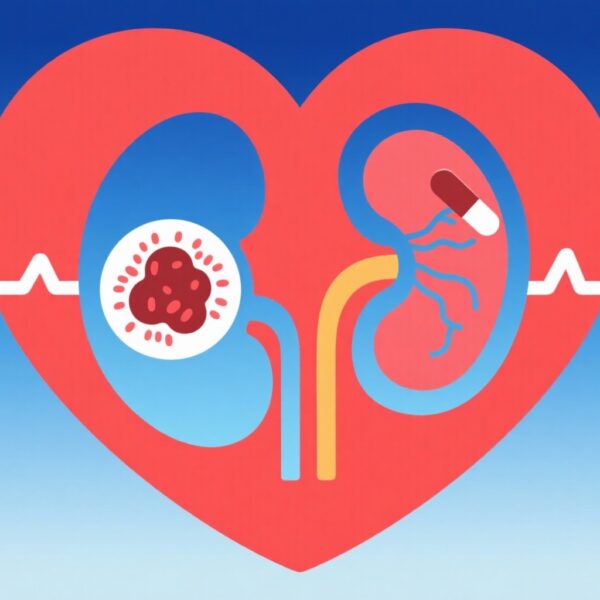Highlight
– Sleep disordered breathing (SDB) affects more than 59% of adults with hypertrophic cardiomyopathy (HCM) in a prospective cohort study.
– Presence of SDB in HCM patients is linked with increased left ventricular mass, impaired diastolic function, and elevated baseline and overnight troponin-T levels, suggesting subclinical myocardial injury.
– Patients with coexisting SDB tend to have higher symptomatic burden (NYHA class II or III) and increased prevalence of hypertension and diabetes.
– Findings support the urgent need for randomized clinical trials to evaluate the effects of SDB treatment on symptom relief and cardiac outcomes in HCM.
Study Background and Disease Burden
Hypertrophic cardiomyopathy (HCM) is a genetically influenced cardiac disorder characterized by left ventricular hypertrophy, often associated with diastolic dysfunction, arrhythmia risk, and heart failure symptoms. Sleep disordered breathing (SDB), encompassing obstructive and central sleep apnea, is a recognized contributor to cardiovascular morbidity through mechanisms such as intermittent hypoxemia, autonomic dysregulation, and endothelial dysfunction.
While SDB is common in the general cardiovascular disease population and is linked to hypertension, heart failure, and arrhythmias, its prevalence and clinical implications in HCM patients have been less clear. Given the unique myocardial substrate and symptomatology of HCM, understanding how undiagnosed SDB affects this population is critical for improving management strategies and potentially mitigating disease progression and symptom burden.
Study Design
This was a prospective cohort study conducted at a single tertiary referral center specialized in HCM care from April 18, 2018, to January 15, 2024. The study enrolled 154 adults with HCM, defined by left ventricular wall thickness ≥15 mm or confirmed pathogenic genetic variants. Patients with a prior diagnosis of SDB or those currently pregnant were excluded to ensure discovery of undetected SDB cases.
Participants underwent overnight polysomnography to detect and classify SDB according to apnea-hypopnea index (AHI) thresholds. Subtypes such as obstructive and central sleep apnea were delineated, with measurements of event severity, hypoxemia episodes, and sleep architecture disruption. Echocardiographic, electrocardiographic, and cardiac biomarker assessments — including troponin-T levels — were performed blinded to polysomnography results. Functional status was assessed by New York Heart Association (NYHA) classification. Data analysis was completed between April and July 2024.
Key Findings
Among the 154 enrolled patients (median age 60 years; 66.2% male), 91 (59.1%) were diagnosed with previously unrecognized SDB. Key comparative findings between patients with and without SDB include:
- Myocardial Remodeling: Patients with SDB demonstrated significantly higher left ventricular mass index (median 128 vs 109 g/m2; P = .03), a marker of adverse myocardial remodeling that correlates with disease progression in HCM.
- Diastolic Dysfunction: The E/e’ ratio, an echocardiographic measure indicating left ventricular filling pressures and diastolic dysfunction, was elevated in the SDB group (median 12.5 vs 10.0; P = .04), indicating more pronounced impairment in ventricular relaxation and compliance.
- Cardiac Biomarkers: Baseline troponin-T levels, sensitive indicators of myocardial injury, were higher in patients with SDB (median 0.013 vs 0.011 ng/mL; P = .04). More notably, these patients exhibited a greater overnight increase in troponin-T (median change 0.0021 vs 0.0002 ng/mL; P = .02), reflecting subclinical myocardial stress or injury during sleep.
- Symptom Burden: NYHA class II or III symptoms were more prevalent among those with SDB (52.7% vs 27.0%; P = .005), indicating a greater functional limitation and worse quality of life associated with coexisting sleep apnea.
- Comorbidities: Hypertension (73.6% vs 57.1%; P = .03) and diabetes (15.4% vs 4.8%; P = .04) were significantly more frequent in the SDB cohort, underscoring a clustering of cardiovascular risk factors. Rates of atrial fibrillation and prior septal myectomy did not significantly differ.
The study did not report separate prevalence data for obstructive versus central sleep apnea subtypes, nor detailed analyses of severity-related outcomes, but quantification of hypoxemia and sleep architecture disruptions was conducted as part of polysomnography.
Expert Commentary
This study provides compelling evidence that SDB is highly prevalent yet underdiagnosed in patients with HCM, and is associated with markers of adverse myocardial remodeling and subclinical injury. The biological plausibility is strong, given that intermittent hypoxemia and sympathetic activation from sleep apnea can exacerbate myocardial hypertrophy, fibrosis, and diastolic dysfunction.
The findings align with established knowledge of SDB’s deleterious cardiovascular effects but highlight a particular vulnerability in HCM patients, who already possess a remodeled and stiff left ventricle. Elevated troponin-T overnight suggests ongoing myocardial injury potentiated by nocturnal breathing disturbances.
Some limitations include the single-center design, potential referral bias given tertiary center enrolment, and exclusion of previously diagnosed SDB which might underestimate total burden. Further, the observational nature precludes causal inference.
Given the symptom burden and pathophysiological linkages demonstrated, randomized controlled trials assessing the impact of continuous positive airway pressure or other SDB treatments on cardiac function, arrhythmia risk, symptoms, and long-term outcomes in HCM are urgently needed.
Conclusion
Undiagnosed sleep disordered breathing affects a majority of patients with hypertrophic cardiomyopathy and is linked with worse myocardial remodeling, diastolic dysfunction, and subclinical myocardial injury, as evidenced by elevated troponin-T levels. These pathophysiological changes coincide with greater symptomatic burden and are more common in patients with coexisting hypertension and diabetes.
This study underscores the clinical imperative to screen for and address SDB in HCM patients. It lays the groundwork for future interventional research to determine whether treating SDB can improve myocardial health, symptom status, and clinical outcomes in this unique population.
References
Karim S, Chahal A, Venkataraman S, Deshmukh AJ, Siontis KC, Mansukhani M, Konecny T, Khanji MY, Petersen SE, Gersh BJ, Geske JB, Somers VK. Prevalence and Clinical Implications of Sleep Apnea in Hypertrophic Cardiomyopathy. JAMA Cardiol. 2025 Sep 3:e252877. doi:10.1001/jamacardio.2025.2877. Epub ahead of print. PMID: 40900558; PMCID: PMC12409649.
Additional supporting references:
– Somers VK, White DP, Amin R, et al. Sleep apnea and cardiovascular disease: an American Heart Association/American College of Cardiology Foundation Scientific Statement. Circulation. 2008;118(10):1080-111.
– Maron BJ, Maron MS. Hypertrophic cardiomyopathy. Lancet. 2013;381(9862):242-55.
– Oldenburg O, Wellmann B, Buchholz A, et al. Sleep-disordered breathing in patients with symptomatic heart failure: a contemporary study of prevalence in and characteristics of 700 patients. Eur J Heart Fail. 2007;9(3):251-7.
These confirm the clinical interplay between sleep apnea and cardiac pathology and reinforce the importance of systematic evaluation in high-risk populations such as HCM.



